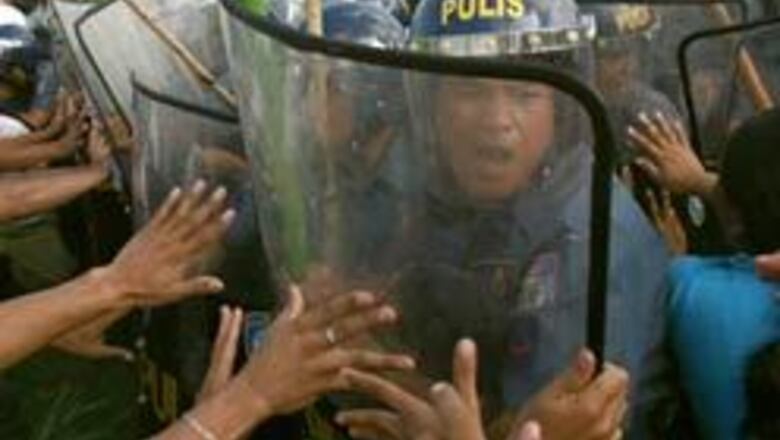
views
Geneva: In a world increasingly driven by violence, Central and South America are the most devastated by armed violence, where killings outside war zones are four times over the world average, say experts.
The issue of armed violence, which every year leaves some 740,000 dead around the world, will be discussed at an international conference late this week in Geneva, organised jointly by the UN Development Programme (UNDP) and the Swiss government, the Spanish news agency EFE reported.
Two-thirds of that figure, nearly 490,000 people, are slain outside war zones as a consequence of crime, and within that category Central and South America are the regions that are hardest hit.
The direct economic impact of armed violence could total as much as $163 billion per year, said Thomas Gremiger, head of the political division of the Swiss foreign ministry.
"Armed violence is one of the biggest impediments to development," he said.
"Representatives of 70 nations including 17 ministers along with international organisations and NGOs will take part in the meeting, where discussions will be held on the social and economic impact of violence and how to avoid it."
Gremiger said that the declaration adopted by 42 countries two years ago on measures to reduce this kind of violence has now been signed by 94 countries.
"Violence is the world's fourth major cause of death among people from 15 to 44 years of age," says Director of the Small Arms Survey project at the Graduate Institute of International Studies in Geneva, Keith Krause,
The UNDP has set itself the task of evaluating the effectiveness of measures adopted to prevent such violence.
The 1980s and 1990s were marked by profound changes in the nature of armed conflicts.
These new wars - also known as "low-intensity conflicts", privatised or informal wars - are substantially different from "traditional" wars.
Experts say it is not easy to establish in these new wars the distinction between private and public, state and non-state, informal and formal - distinctions made for economic or political reasons.
Contrary to traditional wars, in which violence occurs in the public sphere, civil society is simultaneously the stage and the target of organised violence in new wars. This violence occurs in the private sphere - thus privatising violence, the spaces or territories in which it takes place, its actors and its victims, they say.
The units of combat involved in these new wars are difficult to distinguish from the civilian population.
The use of child soldiers, small arms (which are easy to transport, more precise, and can be handled without specialised training), new technologies (such as mobile phones and internet), and new methods to obtain political control, along with the creation and maintenance of a climate of hate, fear and insecurity constitute some of the main characteristics that distinguish this type of organised violence from the older kinds of wars.
Brazil is a clear example of a country deep in this new type of conflict.
It is not involved in any officially declared war, but in certain regions of the country the number of homicides is the highest in the world.
The combination of factors such as rapid urban growth and lack of residential infrastructure (which led to the growth of poor neighborhoods), vast inequalities in the distribution of wealth, slow economic growth, dependence on international loans among others are factors that are at the root of the explosion of direct urban violence in the country.
Between 1991 and 2002, firearms in Rio de Janeiro killed nearly 90,000 people. The increase in violence is directly related to the emergence of narco-trafficking, of arms trafficking and of the groups that control them, EFE said.


















Comments
0 comment